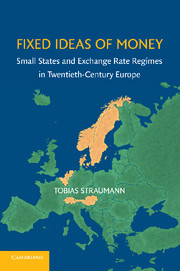Book contents
Eight - Floating in the North
Published online by Cambridge University Press: 06 July 2010
Summary
For 20 years, Switzerland was the only small European country with a floating exchange rate, and in the early 1990s, it seemed very unlikely that this situation would change in the near future. In October 1990, the pound sterling joined the European Monetary System (EMS), and Norway unilaterally pegged its currency to the European currency unit (ECU), followed by Sweden and Finland in May 1991. But then, in late 1992, the EMS crisis forced Sweden and Norway to abandon their ECU link and to look for an alternative exchange-rate policy. In January 1993, the Riksbank officially adopted inflation targeting as a new monetary policy framework, and the krona has been a floating currency ever since. Norway, by contrast, experienced a more protracted regime shift but ended up with the same choice. In 2001, after having failed to keep the krone stable vis-à-vis the ECU for some time, the government announced inflation targeting. As a result of these regime changes, it has become more common for small European states to have a flexible exchange rate. Of course, small European states with a pegged exchange rate or the euro are still more numerous today, but the fact that Norway and Sweden, formerly staunch defenders of the fixed regime, shifted to floating in the 1990s is a clear indication that the era of “fixed ideas” ended in the late twentieth century.
As in the chapter on the Swiss regime change (Chapter SEVEN), two questions are of particular interest.
- Type
- Chapter
- Information
- Fixed Ideas of MoneySmall States and Exchange Rate Regimes in Twentieth-Century Europe, pp. 308 - 342Publisher: Cambridge University PressPrint publication year: 2010



